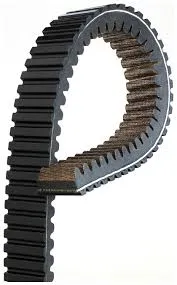- Arabic
- French
- Russian
- Spanish
- Portuguese
- Turkish
- Armenian
- English
- Albanian
- Amharic
- Azerbaijani
- Basque
- Belarusian
- Bengali
- Bosnian
- Bulgarian
- Catalan
- Cebuano
- Corsican
- Croatian
- Czech
- Danish
- Dutch
- Afrikaans
- Esperanto
- Estonian
- Finnish
- Frisian
- Galician
- Georgian
- German
- Greek
- Gujarati
- Haitian Creole
- hausa
- hawaiian
- Hebrew
- Hindi
- Miao
- Hungarian
- Icelandic
- igbo
- Indonesian
- irish
- Italian
- Japanese
- Javanese
- Kannada
- kazakh
- Khmer
- Rwandese
- Korean
- Kurdish
- Kyrgyz
- Lao
- Latin
- Latvian
- Lithuanian
- Luxembourgish
- Macedonian
- Malgashi
- Malay
- Malayalam
- Maltese
- Maori
- Marathi
- Mongolian
- Myanmar
- Nepali
- Norwegian
- Norwegian
- Occitan
- Pashto
- Persian
- Polish
- Punjabi
- Romanian
- Samoan
- Scottish Gaelic
- Serbian
- Sesotho
- Shona
- Sindhi
- Sinhala
- Slovak
- Slovenian
- Somali
- Sundanese
- Swahili
- Swedish
- Tagalog
- Tajik
- Tamil
- Tatar
- Telugu
- Thai
- Turkmen
- Ukrainian
- Urdu
- Uighur
- Uzbek
- Vietnamese
- Welsh
- Bantu
- Yiddish
- Yoruba
- Zulu
Spa . 15, 2024 22:54 Back to list
Understanding Mechanical Drive Systems and Belt Technologies for Efficient Power Transmission
Mechanical Drives and Belting An Overview
Mechanical drives are an essential component in various machines and systems, enabling the transfer of power and motion between different parts. They play a crucial role in industries ranging from manufacturing to automotive, ensuring that machines operate efficiently and effectively. One of the most common types of mechanical drives revolves around belting systems, which serve as the link between power sources and machinery. This article aims to provide an overview of mechanical drives and the various types of belting used in these systems, highlighting their significance and applications.
At its core, a mechanical drive transmits power from one component to another, often transforming the rotational motion of a motor into the desired motion required by the equipment. This can occur through various methods, including gears, chains, and belts. Among these, belt drives have gained considerable popularity due to their simplicity, effectiveness, and versatility.
Belt drives consist of a flexible belt looped around two or more pulleys. The driving pulley, attached to the power source, rotates, causing the belt to move. As the belt moves, it transfers motion to the driven pulley, which is linked to the machinery or component that needs to be powered. One of the key advantages of belt drives is their ability to transmit power over relatively long distances, making them ideal for large machines and systems.
There are different types of belts used in mechanical drives, each with specific characteristics and applications
. The most common types include flat belts, V-belts, and synchronous (timing) belts.mechanical drives and belting

1. Flat Belts Flat belts are one of the simplest types of belts, made from a continuous, flat piece of material. They are suitable for transmitting power over long distances and are commonly used in applications such as conveyor systems. Flat belts require proper tension to prevent slippage and are typically used in conjunction with pulleys designed to accommodate their flat profile.
2. V-Belts V-belts, featuring a trapezoidal cross-section, are widely used due to their efficient power transmission capabilities. Their design allows them to fit snugly into the grooves of the pulleys, increasing friction and minimizing slippage. V-belts are often employed in industrial machinery, HVAC systems, and automotive applications where high torque and reliability are required. One of the advantages of V-belts is their ability to operate at higher speeds compared to flat belts.
3. Synchronous Belts Also known as timing belts, synchronous belts are characterized by their toothed design, which enables them to engage with corresponding teeth on the pulleys. This design ensures precise synchronization between the driving and driven components, making them ideal for applications where exact timing is critical. Synchronous belts are widely used in robotics, automotive timing applications, and various machining processes.
Another important aspect of mechanical drives and belting systems is maintenance. Regular inspection is essential to ensure optimal performance and prevent failures. Wear and tear, misalignment, and improper tension can lead to decreased efficiency and potential breakdowns. For instance, a frayed or worn belt can slip, reduce power transmission, and ultimately affect the overall performance of the machine. Therefore, routine checks and timely replacements are crucial for maintaining the integrity of the system.
In conclusion, mechanical drives and belting systems are vital elements in modern machinery and equipment. They provide an efficient means of power transmission across various applications, from industrial processes to automotive systems. Understanding the different types of belts and their functions can help industries select the appropriate solution for their specific needs. As technology continues to evolve, innovations in materials and design are likely to enhance the performance and reliability of mechanical drives and belting systems, driving further advancements in efficiency and productivity in various fields.
-
Korean Auto Parts Timing Belt 24312-37500 For Hyundai/Kia
NewsMar.07,2025
-
7PK2300 90916-T2024 RIBBED BELT POLY V BELT PK BELT
NewsMar.07,2025
-
Chinese Auto Belt Factory 310-2M-22 For BMW/Mercedes-Benz
NewsMar.07,2025
-
Chinese Auto Belt Factory 310-2M-22 For BMW/Mercedes-Benz
NewsMar.07,2025
-
90916-02660 PK Belt 6PK1680 For Toyota
NewsMar.07,2025
-
drive belt serpentine belt
NewsMar.07,2025

